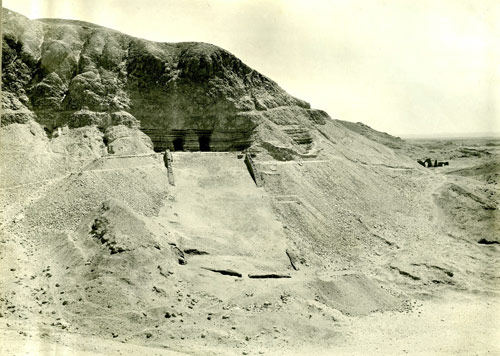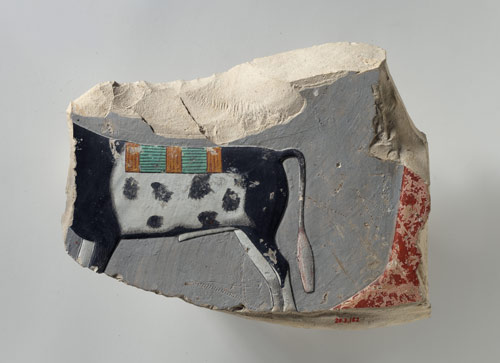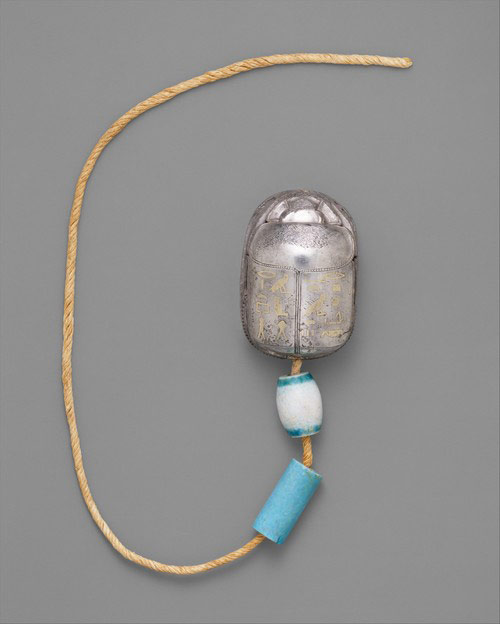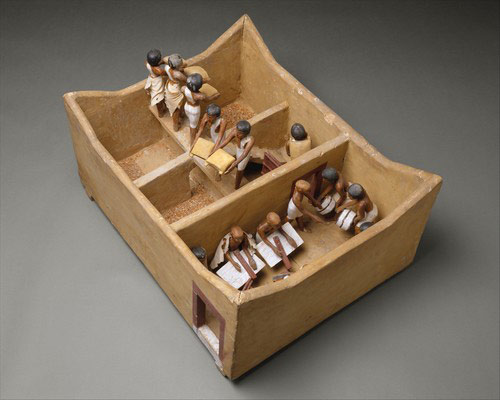 Traveling Exhibitions
Traveling Exhibitions Traveling Works of Art
Traveling Works of Art Conservation Projects
Conservation Projects Excavations
Excavations Fellows
Fellows Exchanges & Collaborations
Exchanges & Collaborations Multiple Items
Multiple Items
The Met Around the World presents the Met’s work via the global scope of its collection and as it extends across the nation and the world through a variety of domestic and international initiatives and programs, including exhibitions, excavations, fellowships, professional exchanges, conservation projects, and traveling works of art.
The Met Around the World is designed and maintained by the Office of the Director.
Traveling
Exhibitions
The Met organizes large and small exhibitions that travel beyond the Museum's walls, extending our scholarship to institutions across the world. See our national and international traveling exhibition program from 2009 to the present.
Traveling
Works of Art
The Met lends works of art to exhibitions and institutions worldwide to expose its collection to the broadest possible audience. See our current national and international loans program.
Conservation
Projects
The preservation of works of art is a fundamental part of the Met's mission. Our work in this area includes treating works of art from other collections. See our national and international conservation activities from 2009 to the present.
Excavations
The Met has conducted excavations for over 100 years in direct partnership with source countries at some of the most important archaeological sites in the world. Today we continue this tradition in order to gain greater understanding of our ancient collections. See our national and international excavation program from the Met's founding to the present.
Fellows
The Met hosts students, scholars, and museum professionals so that they can learn from our staff and pursue independent research in the context of the Met's exceptional resources and facilities. See the activities of our current national and international fellows.
Exchanges & Collaborations
The Met's work takes many forms, from participation in exchange programs at partnering institutions and worldwide symposia to advising on a range of museum issues. These activities contribute to our commitment to advancing the work of the larger, global community of art museums. See our national and international exchange program and other collaborations from 2009 to the present.
 Tombs of Meketre and Wah. Photograph by Harry Burton, 1920 (MC 185). Archives of the Egyptian Expedition, Department of Egyptian Art.
Tombs of Meketre and Wah. Photograph by Harry Burton, 1920 (MC 185). Archives of the Egyptian Expedition, Department of Egyptian Art. Wood models as discovered in the tomb of Meketre. Photograph by Harry Burton, 1920 (MC 36). Archives of the Egyptian Expedition, Department of Egyptian Art.
Wood models as discovered in the tomb of Meketre. Photograph by Harry Burton, 1920 (MC 36). Archives of the Egyptian Expedition, Department of Egyptian Art.
Relief fragment from Tomb of Meketre
Middle Kingdom, Dynasty 12, early reign of Amenemhat I, ca. 1981–1975 B.C.
Egypt, Upper Egypt; Thebes, Southern Asasif, Tomb of Meketre (TT 280, MMA 1101), Court, Radim, MMA 1920
Rogers Fund and Edward S. Harkness Gift, 1920 (20.3.162)


Scarab Bracelet of Wah
Middle Kingdom, Dynasty 12, early reign of Amenemhat I, ca. 1981–1975 B.C.
Egypt, Upper Egypt; Thebes, Southern Asasif, Tomb of Wah (MMA 1107), Mummy, over crossed wrists, MMA 1920
Rogers Fund and Edward S. Harkness Gift, 1940 (40.3.12)


Statue of an Offering Bearer
Middle Kingdom, Dynasty 12, early reign of Amenemhat I, ca. 1981–1975 B.C.
Egypt, Upper Egypt; Thebes, Southern Asasif, Tomb of Meketre (TT 280, MMA 1101), serdab, MMA 1920
Rogers Fund and Edward S. Harkness Gift, 1920 (20.3.7)


Model granary from the tomb of Meketre
Middle Kingdom, Dynasty 12, early reign of Amenemhat I, ca. 1981–1975 B.C.
Egypt, Upper Egypt; Thebes, Southern Asasif, Tomb of Meketre (TT 280, MMA 1101), serdab, MMA 1920
Rogers Fund and Edward S. Harkness Gift, 1920 (20.3.11)

Egypt
1920
Background
The hills of the Theban necropolis, on the west bank of the Nile opposite modern Luxor, are studded with tombs used and reused during much of Egypt's pharaonic period and later. One of the most important earlier structures belonged to "the Overseer of the Seal" and "the Chief Steward" Meketre, whose career stretched between the reigns of the Middle Kingdom pharaohs Mentuhotep II Nebhepetre (ca. 2051–2000 B.C.) and Amenemhat I (ca. 1981–1952 B.C.); the period marks the transition from the end of Dynasty 11 to the beginning of Dynasty 12. The tomb is located high on a cliff behind the hill now known as Sheikh Abd el-Qurna.
A broad, steep causeway led up the hillside to the front of the tomb, originally sheltered by a columned portico. The tomb itself consisted of a long corridor cut into the bedrock that ended in a square room, which contained the entrance to the burial chamber. Parts of the structure were lined with a higher-quality limestone and decorated with fine, exquisitely painted relief. A second, parallel tomb was built for a man named Intef, certainly a close relative of Meketre. On the right side of the portico, a small, rough tomb was constructed for a man named Wah, who served in Meketre's household.
Excavations
Although most of the tomb of Meketre was looted in ancient times, the robbers overlooked a rough opening in the floor of the corridor that gave access to a small chamber. Inside, the excavators found "a small, totally untouched chamber crammed with myriads of little, brightly painted statuettes of men and animals and models of boats." The twenty-four wood models depicted the production of various foods and craft items, including bread and beer, carpentry, and weaving. Each small figure was delicately rendered and carefully posed. Other models depicted ships under sail or being rowed. Two exquisite female figures represent personifications of the estates that would have provided funerary offerings for the deceased. These models did not merely depict daily life in Egypt, but rather the production of the items that would sustain the deceased in the afterlife.
The small adjacent tomb of Wah was also found intact. Wah's burial is notable for the masses of linen used to wrap and protect the mummy, a gilded wood and cartonnage mask, and a fine wood statuette of the owner. When the mummy was x-rayed in 1935, various items of jewelry were observed. When the mummy was unwrapped in December 1939–January 1940 (a process no longer condoned by archaeologists), the jewelry included a magnificent silver scarab.


